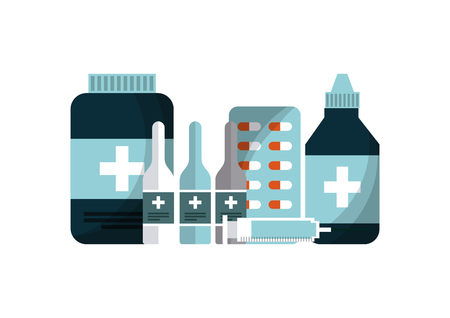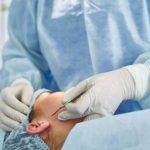1. Understanding PRP Therapy: What Is It?
Platelet-Rich Plasma (PRP) therapy is a cutting-edge treatment that has gained popularity for its ability to combat hair loss naturally. This procedure utilizes the body’s own healing properties to stimulate hair growth, making it a sought-after option for individuals experiencing thinning hair or early-stage baldness.
How Is PRP Derived?
PRP is extracted from the patient’s own blood through a simple yet precise process. Here’s how it works:
| Step | Description |
|---|---|
| 1. Blood Draw | A small amount of blood is drawn from the patient, usually from the arm. |
| 2. Centrifugation | The blood sample is placed in a centrifuge, which spins rapidly to separate its components. |
| 3. PRP Extraction | The platelet-rich portion is carefully extracted, leaving behind red blood cells and other unwanted components. |
| 4. Injection into Scalp | The concentrated PRP is injected into areas of the scalp where hair loss is occurring. |
Why Is PRP Gaining Popularity?
PRP therapy has become a preferred choice for those looking for a natural way to restore their hair. Here are some reasons why:
- Non-Surgical Solution: Unlike hair transplant surgery, PRP therapy does not require incisions or stitches.
- Minimal Downtime: Patients can resume normal activities shortly after treatment.
- No Risk of Allergic Reactions: Since PRP is derived from the patient’s own blood, there is little to no risk of adverse reactions.
- Encourages Natural Hair Growth: The growth factors in PRP help rejuvenate dormant hair follicles and promote thicker, healthier hair.
2. The Science Behind PRP: How It Works
Platelet-Rich Plasma (PRP) therapy is a groundbreaking treatment for hair loss that leverages the bodys natural healing abilities. But how exactly does it work? Lets take a closer look at the science behind PRP and why its so effective in promoting hair growth.
How PRP Stimulates Hair Follicles
PRP is derived from your own blood and contains a high concentration of platelets, which are rich in growth factors. These growth factors play a crucial role in stimulating dormant hair follicles, encouraging them to enter the active growth phase. When injected into the scalp, PRP helps revitalize weak or miniaturized hair follicles, leading to thicker and healthier hair over time.
The Role of Growth Factors in Hair Regeneration
The magic behind PRP lies in its powerful growth factors, which support various cellular processes essential for hair regrowth. Here’s a breakdown of some key growth factors found in PRP and their functions:
| Growth Factor | Function |
|---|---|
| Platelet-Derived Growth Factor (PDGF) | Stimulates cell growth and new blood vessel formation. |
| Vascular Endothelial Growth Factor (VEGF) | Enhances blood supply to nourish hair follicles. |
| Epidermal Growth Factor (EGF) | Supports tissue regeneration and repair. |
| Insulin-Like Growth Factor-1 (IGF-1) | Promotes hair follicle survival and growth. |
| Transforming Growth Factor-Beta (TGF-β) | Aids in regulating inflammation and follicle remodeling. |
Improving Blood Supply to the Scalp
Poor circulation can contribute to hair thinning by depriving follicles of essential nutrients. PRP helps counteract this issue by promoting angiogenesis—the formation of new blood vessels. Increased blood flow ensures that hair follicles receive oxygen and vital nutrients, creating an optimal environment for stronger, healthier hair growth.
The Regeneration Process
The combination of stimulated follicles, enhanced blood supply, and cellular rejuvenation leads to gradual but noticeable improvements in hair density and thickness. Since PRP is a natural treatment using your own plasma, the risk of adverse reactions is minimal, making it a safe and effective option for those struggling with hair loss.

3. PRP for Hair Loss: What the Research Says
Platelet-rich plasma (PRP) therapy has gained popularity as a promising treatment for hair loss, but what does the scientific research say? Numerous clinical studies have explored the effectiveness of PRP for different types of hair loss, including androgenetic alopecia (male and female pattern baldness). Lets take a look at some key findings.
Clinical Studies on PRP for Hair Loss
Several studies have examined how PRP injections impact hair growth. Researchers have focused on key factors such as hair density, thickness, and overall patient satisfaction. Here’s a summary of notable studies:
| Study | Participants | Findings |
|---|---|---|
| A Randomized Controlled Trial (2019) | 40 patients with androgenetic alopecia | Significant increase in hair count and thickness after three PRP sessions. |
| Meta-Analysis of 11 Studies (2020) | Total of 262 patients | PRP showed noticeable improvement in hair density compared to placebo treatments. |
| Pilot Study on Female Patients (2021) | 30 women with hair thinning | Patients reported increased hair volume and reduced shedding after four sessions. |
Why PRP Works for Hair Loss
The success of PRP therapy lies in its ability to stimulate dormant hair follicles and encourage natural hair regrowth. The high concentration of growth factors in PRP helps:
- Increase blood supply: Enhances nourishment to weakened hair follicles.
- Extend the anagen phase: Helps prolong the active growth cycle of hair.
- Reduce inflammation: Minimizes damage caused by conditions like androgenetic alopecia.
The Future of PRP Research
The current body of research is promising, but scientists continue to explore ways to optimize PRP therapy for better results. Future studies may focus on refining treatment protocols, determining ideal injection techniques, and combining PRP with other therapies to enhance effectiveness.
4. The PRP Treatment Process: What to Expect
PRP therapy for hair loss is a straightforward procedure that involves drawing your own blood, processing it to extract platelet-rich plasma, and injecting it into the scalp. Here’s a step-by-step guide on what you can expect during the treatment process.
Step 1: Blood Collection
The first step in PRP therapy is drawing a small amount of blood from your arm, similar to a routine blood test. This typically takes just a few minutes and is relatively painless.
Step 2: Centrifugation
Once the blood is collected, it is placed into a centrifuge—a machine that spins at high speeds to separate its components. This process isolates the platelet-rich plasma from red blood cells and other elements. The entire centrifugation process usually takes about 10-15 minutes.
Step 3: PRP Extraction
After centrifugation, the concentrated platelet-rich plasma is carefully extracted using a syringe. This plasma contains essential growth factors that help stimulate hair follicles and encourage new hair growth.
Step 4: Scalp Injection
The PRP is then injected directly into areas of the scalp experiencing hair thinning or hair loss. A fine needle is used to ensure precision, and while some patients may feel mild discomfort, the procedure is generally well tolerated.
Step 5: Post-Treatment Care
Following the injections, patients can resume their normal activities immediately. Some mild redness, swelling, or tenderness at the injection sites may occur but typically resolves within a few hours to a couple of days.
Session Frequency and Expected Results
PRP therapy requires multiple sessions for optimal results. Below is a general guideline for session frequency:
| Treatment Phase | Frequency |
|---|---|
| Initial Phase | Once per month for 3-4 months |
| Maintenance Phase | Every 4-6 months |
Many patients start noticing improvements in hair thickness and reduced shedding after the second or third session. However, individual results may vary based on factors such as age, genetics, and overall scalp health.
Potential Side Effects
PRP therapy is considered safe since it uses your own blood, minimizing the risk of allergic reactions. However, some possible side effects include:
- Mild pain or discomfort at the injection site
- Temporary swelling or redness
- Slight bruising in rare cases
- A mild headache (uncommon)
If any side effects persist beyond a few days, it’s recommended to consult with your provider to ensure proper healing.
Overall, PRP therapy offers a natural approach to combating hair loss by leveraging the body’s own healing mechanisms. With minimal downtime and promising results, it has become an increasingly popular option for those seeking to restore thicker, healthier hair.
5. Who Is a Good Candidate for PRP Therapy?
PRP therapy has gained popularity as a natural and effective treatment for hair loss, but it’s not a one-size-fits-all solution. Understanding who benefits the most from this procedure can help set realistic expectations and improve overall results.
Ideal Candidates for PRP Hair Treatment
PRP therapy works best for individuals in the early stages of hair thinning or those experiencing mild to moderate hair loss. If your hair follicles are still active but producing thinner strands, PRP may help stimulate regrowth and strengthen existing hair.
| Ideal Candidates | Why PRP Works for Them |
|---|---|
| Men and women with androgenetic alopecia (pattern baldness) | PRP can slow down hair thinning and support follicle regeneration |
| Individuals with recent hair loss (within the last few years) | The sooner treatment starts, the better the response from hair follicles |
| People with thinning hair but still have active follicles | PRP helps strengthen weak follicles and promote healthier hair growth |
| Those looking for a natural alternative to medications or surgery | Avoids synthetic drugs while utilizing the bodys own healing properties |
Factors That Influence PRP Success
The effectiveness of PRP therapy depends on several factors, including age, genetics, overall health, and lifestyle choices. Younger individuals with early-stage hair loss typically respond better than those with advanced baldness. Additionally, maintaining a healthy diet and reducing stress can enhance treatment outcomes.
- Adequate Platelet Levels: Individuals with healthy platelet counts see better results since PRP relies on these components to stimulate growth.
- No Severe Scalp Conditions: Those without chronic scalp diseases or infections tend to respond better to treatment.
- No Smoking or Excessive Alcohol Use: Smoking and excessive alcohol intake can limit blood flow and reduce the effectiveness of PRP.
- A Commitment to Multiple Sessions: Most patients require multiple treatments over several months for optimal results.
Considerations for Those with Severe Hair Loss or Medical Conditions
If you have significant bald patches or long-term hair loss with inactive follicles, PRP alone may not be enough. In these cases, combining PRP with other treatments like hair transplants or FDA-approved medications may provide better results.
Candidates Who May Not Benefit from PRP Alone:
- Individuals with complete baldness: If there are no active follicles left, PRP cannot regenerate new ones.
- Poor platelet quality: Certain medical conditions may affect platelet function, reducing PRP’s effectiveness.
- Alopecia Areata or Autoimmune Hair Loss: Since these conditions involve immune system dysfunction, PRP might not address the root cause effectively.
- Chemotherapy-induced hair loss: While some regrowth may occur post-treatment, PRP is not always effective in reversing chemo-related hair loss.
If you’re unsure whether PRP is right for you, consulting with a medical professional can help determine if this treatment aligns with your specific needs and expectations.
6. PRP vs. Other Hair Loss Treatments: How It Compares
Platelet-Rich Plasma (PRP) therapy is gaining popularity as a natural and effective treatment for hair loss. But how does it compare to other common treatments like minoxidil, finasteride, and hair transplant surgery? Let’s take a closer look at the differences, benefits, and limitations of each approach.
How PRP Stacks Up Against Other Treatments
Each hair loss treatment works differently, targeting various causes of hair thinning and baldness. Below is a comparison of PRP therapy with other widely used treatments:
| Treatment | How It Works | Benefits | Limitations |
|---|---|---|---|
| PRP Therapy | Uses your own platelets to stimulate hair follicle growth and improve scalp health. | – Natural and drug-free – Minimal risk of side effects – Can be combined with other treatments |
– Requires multiple sessions – Results vary by individual – Not effective for advanced baldness |
| Minoxidil (Rogaine) | A topical solution that increases blood flow to hair follicles, prolonging the growth phase. | – FDA-approved – Easy to use at home – Affordable |
– Must be used indefinitely to maintain results – Can cause scalp irritation – Results can take months to appear |
| Finasteride (Propecia) | An oral medication that blocks DHT, a hormone linked to hair loss. | – FDA-approved – Effective for many men with male pattern baldness – Slows further hair loss |
– Possible side effects like decreased libido – Only for men – Requires long-term use |
| Hair Transplant Surgery | A surgical procedure that moves healthy hair follicles from one part of the scalp to another. | – Permanent results – Effective for severe baldness – Natural-looking outcome when done properly |
– Expensive – Requires surgery and recovery time – Risk of scarring or infection |
The Best Choice Depends on Your Needs
No single treatment works for everyone, so the best option depends on factors like the cause of your hair loss, budget, and personal preference. PRP therapy is an excellent choice for those looking for a natural, non-invasive treatment with minimal downtime. However, combining PRP with other options like minoxidil or finasteride may yield even better results.
Who Might Benefit Most from PRP?
If youre experiencing early-stage hair thinning or want to enhance the effectiveness of other treatments, PRP could be a great solution. Since it uses your bodys own healing properties, its a safer alternative compared to medications with potential side effects.

